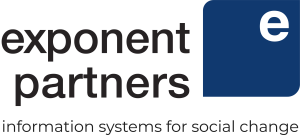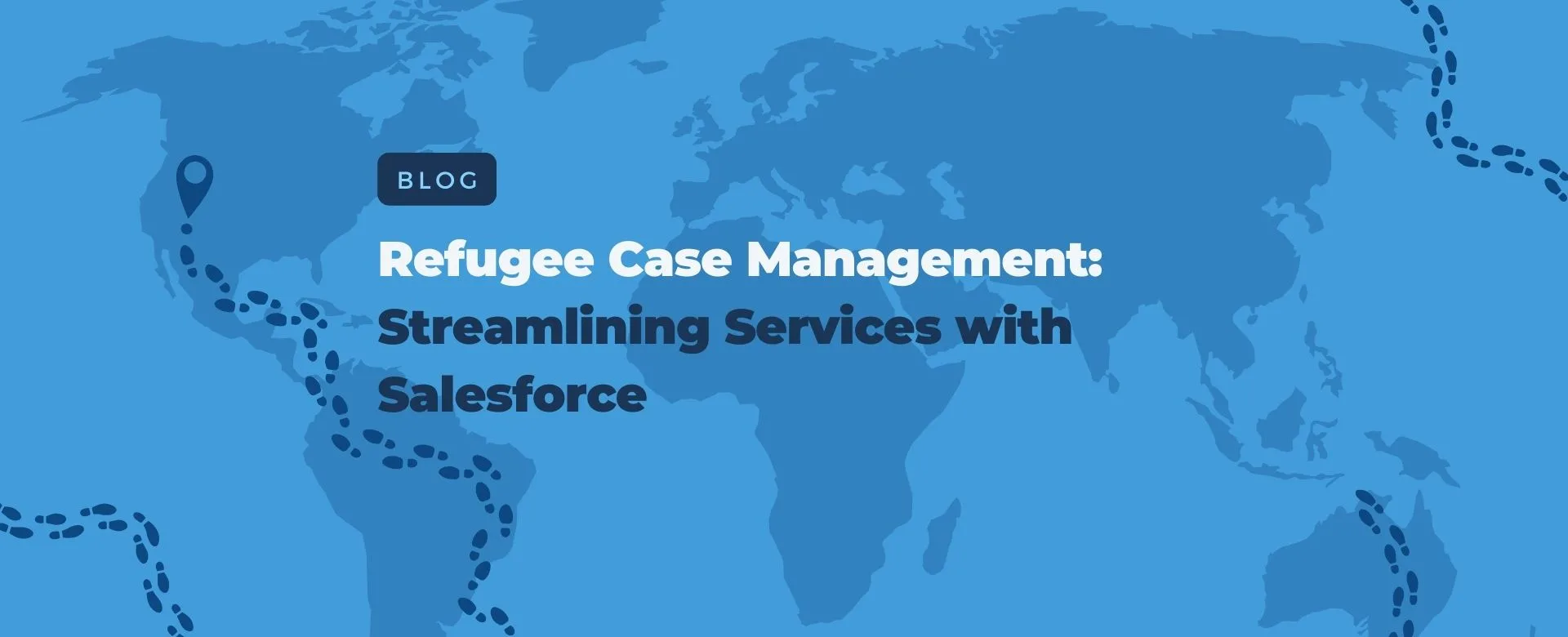Refugee Case Management: Streamlining Services with Salesforce
From 2019 to 2022, the U.S. government granted asylum to an average of 346,200 refugees each year. And that’s just the figure for approved asylees. By the end of 2022, the backlog for asylum seekers reached nearly 1.6 million people. It hardly requires a stroke of genius to conclude that nonprofit refugee organizations have their work cut out for them.
Beyond the sheer headcount, nonprofits aiding vulnerable communities like refugees and immigrants must confront multiple challenges. The inevitable language barriers hinder effective communication and service delivery. Diverse needs, ranging from housing to employment, require multi-faceted solutions. Cultural and religious plurality also necessitates a nuanced approach to integration. Differing educational backgrounds and gaps in digital and financial literacy further complicate efforts to provide extensive refugee support. This is where Salesforce CRM software can prove invaluable.
But how can your nonprofit maximize the potential of this technology in the field of human services? Enter Exponent Partners, a team of nonprofit strategists to help you navigate the complexities of Salesforce for streamlined refugee case management.
Revolutionizing Refugee Case Management with Salesforce’s Features and Capabilities
Salesforce can be pivotal in turning your nonprofit refugee organization from a standard functional setup into a purpose-driven powerhouse. Let’s explore how its formidable features and capabilities achieve this.
1. Customizable Data Model
Traditional databases can be rigid and limited, making it challenging to capture the multilayered information that refugee nonprofits often deal with. With Salesforce, you can drill down to the information you need for robust case management. Its customizable fields allow you to gather data directly relevant to a refugee’s situation, like immigration status, family size, or specific vulnerabilities (e.g., “Unaccompanied Minor,” “Medical Urgency”).
Object labels, tailored to the nonprofit’s terminology, create a shared language among staff, volunteers, and partners. These are identifiers, similar to name tags or labels, that help categorize and easily identify specific sets of data or functions, ensuring efficient access and organization. This minimizes misunderstandings and streamlines internal communication. For instance, instead of a generic “Client,” you could use “Asylee” or “Resettled Individual” to be more specific.
2. Client Tracking and Reporting
Salesforce’s Client Tracking and Reporting functionality acts as a control center for refugee nonprofits, offering real-time oversight on individual cases and program outcomes. By aggregating data from custom fields like “Asylum Status” or “Employment Services,” this feature produces trend analyses and performance metrics.
Let’s consider job placement services within a refugee nonprofit. Salesforce’s Client Tracking and Reporting feature can monitor the “Job Training Status” field and generate reports showing success rates. If you notice a significant uptick in refugees moving from “Job Training In-Progress” to “Employed,” this can signal that a particular training program is highly effective. Conversely, if the status for many remains “Job Seeking,” it may indicate a need for program evaluation or additional support services like resume building or interview coaching. These insights enable data-driven adjustments to program delivery, ensuring more effective outcomes.
3. Task and Workflow Automation
Manual processes can significantly slow down service delivery. With Salesforce’s task and workflow automation tools, refugee nonprofits can perform routine jobs like document verification and appointment scheduling in a snap. Setting the predefined rules based on custom fields allows you to trigger automatic tasks or follow-up measures.
For instance, if a refugee’s status changes to “Permanent Housing Secured,” an automated workflow could initiate a series of actions such as scheduling a “Home Orientation” or other community integration programs.
4. Collaboration Tools
Salesforce collaboration solutions like Chatter offer unified platforms for seamless, real-time communication and knowledge-sharing among team members. These can facilitate quicker resolution of complex cases.
Imagine a caseworker identifying an urgent need for mental health group support for a subset of refugees dealing with post-traumatic stress disorder (PTSD). Instead of individually reaching out to behavioral health professionals or arranging a series of meetings, the caseworker could post this requirement in a dedicated “Mental Health Support” channel.
Counselors and other relevant team members could immediately suggest available resources, therapeutic approaches, or even volunteer to lead such a group. This enhances interdepartmental communication, accelerates decision-making, and creates a data bank of shared insights.
5. Mobile Accessibility
With Salesforce’s mobile accessibility, field agents and caseworkers can access the database in real time, no matter where they are. This becomes particularly useful during emergencies like sudden influxes of refugees due to conflicts or natural disasters.
Immediate access and data input enable the coordination center to promptly gauge the scale of needs—from food and medical supplies to temporary shelters. Real-time dashboards can then be used to make quick, informed decisions on resource allocation. The capability to be this agile and responsive elevates the effectiveness of the nonprofit refugee organization’s humanitarian efforts.
Leveraging Salesforce for Refugee Wraparound Services
Providing full-scale aid for vulnerable communities like refugees and immigrants is no small feat. Although it includes meeting urgent concerns, more importantly, it needs to encompass a strategic plan. To better rebuild lives, refugee nonprofits need to provide their clients with secure housing, job opportunities, and skill development. Salesforce offers a way to manage these elements seamlessly.
Wraparound Services in Refugee Resettlement
Here are the typical services offering refugees the tools and resources they need for successful resettlement and integration.
Housing Assistance
More than temporary shelter, this involves helping refugees secure stable, long-term housing, often through negotiations with landlords or subsidized housing programs.
Employment Services
This covers job placement and workforce development for long-term career growth. Services might include skills assessments, resume workshops, and industry-specific job training.
Skill-Building Programs
These are educational or training initiatives that go beyond immediate employment needs, focusing on broader competencies like digital literacy, financial management, or even parenting skills.
Language and Cultural Education
Language classes are a starting point, but cultural orientation is equally essential. This empowers refugees to understand and adapt to societal norms in their new country.
Healthcare Support and Counseling
Health education and mental health support groups form the usual core of offerings. Additionally, nonprofits also provide guidance on navigating the healthcare system for ongoing needs. These include specialized services such as nutrition and behavior counseling, as well as perinatal care, which entails regular health check-ups for pregnant women.
Utilizing Salesforce to Manage Wraparound Services for Refugees
Salesforce is a game-changing asset in refugee case management. It turns the logistical maze of wraparound services into a manageable process. In housing assistance, this groundbreaking technology can help you track a refugee’s application status and special needs or alert the appropriate staff when a housing unit becomes available. In employment and workforce development, you can customize Salesforce to keep tabs on individual progress through job training programs or skills assessments, flagging any gaps that need to be addressed.
Skill-building programs could also be tracked in terms of enrollment, completion, and effectiveness. On top of these, Salesforce can consolidate all the information into user-friendly dashboards, offering a 360-degree view for refugee case management workers. This results in more targeted, timely, and effective service delivery.
Choosing Exponent Partners for Salesforce Implementation
The monumental undertaking of refugee case management demands nothing less than cutting-edge software solutions from Salesforce. However, leveraging such highly advanced technology requires a resilient team of specialists fueled by a deep and unyielding sense of purpose.
At Exponent Partners, we understand your commitment to making a meaningful difference in the lives of vulnerable communities like refugees and immigrants. And yes, we get it—wrestling with software wasn’t what you signed up for. That’s where we come in.
But we’re more than tech experts; we’re professionals who understand the unique challenges of managing a nonprofit refugee organization. That’s why we’ve made it our business to tailor Salesforce to streamline your refugee case management operations. This way, you can focus on the heart of the matter, and that’s to radically change lives.
Ready to see a custom Salesforce solution in action? Contact us today!

